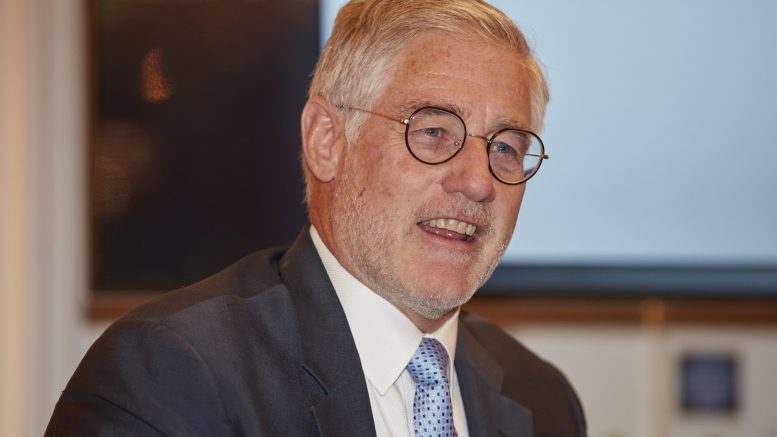North America’s oldest silver miner, Hecla Mining (NYSE: HL), is set to consolidate its position as the continent’s primary silver leader. It is working to increase U.S. output by 20% and to become the most prominent Canadian silver producer by year-end.
The 130-year-old company’s CEO, Phil Baker, told the recent Canadian Mining Symposium in London that the 1.2 billion oz. silver market is growing at about 200 million oz. per year, pulled most notably by demand from photovoltaic (PV) applications. He expects the PV market alone to grow at about 12% annually, which translates to about 200 million ounces.
While the photographic demand for silver had passed, growing demand from industrial applications had expanded from electronics to the energy industry itself, “which has brought us to a new place for silver,” Baker said.
Coupled with rising industrial applications, massive demand from India for silver jewelery has reached pre-pandemic levels after causing “some concern,” according to the executive, since demand had fallen off dramatically during the pandemic years.
Baker estimates the primary silver market at about 800 million oz., with another 200 million oz. sourced on the secondary recycled market. “That deficit, of course, is coming out of above-ground stocks. Unlike other metals, you’ll never run out of silver. But it’s got to be extracted from people, which maybe is harder than extracting it from the ground when you have a robust market,” said Baker.
He says Hecla takes the long view on silver given the metal’s solid fundamentals and its habit of mimicking gold price movements in potentially exponential terms. “It doesn’t matter when it’s going to happen, but we know that when it does, our share price will move dramatically along with the silver price,” he said.
Growth trajectory
Currently, Hecla accounts for about 40% of U.S. silver output. That figure is set to jump to about 60% as soon as the miner ramps up production at the Greens Creek mine in southeast Alaska and hits its stride with a new mining technique at the Lucky Friday mine in Idaho.
Its Greens Creek asset has since 1987 produced 330 million oz. of silver, where continuous exploration success has allowed for several 10-year extensions of the mine plan.
“Today, we’ve got about another decade left,” said Baker.
The mine produces about 10 million oz. per year. It also allows Hecla to be the third-largest producer of zinc in the U.S., with another 50,000 oz. of gold a year as a by-product credit.
“One analyst told me years back, that ‘Greens Creek, besides uranium, is the highest-valued rock on the planet’ because of the four metals it produces. It’s a gift that keeps giving.”

Greens Creek, in southeast Alaska, is one of the world’s largest and lowest-cost primary silver mines. (Image courtesy of Hecla Mining.)
Since Hecla became the sole operator in 2008 (Rio Tinto was the operator until then), the mine has generated about US$1.2 billion of free cash flow.
At the Lucky Friday mine, Baker said the company was finally coming to grips with the difficulty of dealing with an 80-year-old mine more than 3 km deep.
Since the start, the mine, on average, produced about 2.5 to 3 million oz. a year. But because of the depth, it is seismically active, which has presented the company with significant operating headaches.
Baker explained the blasting method energized the surrounding unstable rocks, causing earthquakes and mine instability.
Over the past decade the company has tried several mining techniques, even looking at mechanically mining the rock. “Well, in that process, we discovered another way of doing it, which is a big blast, where we’re blasting 10,000 times the amount of material, which creates a huge amount of energy,” he explained.
“And that huge amount of energy gets released simultaneously with the blast. And so, as a result, this mine is going from a very high-grade 800 tons a day operation to 1,200 tons, and I suspect we’ll eventually get to 1,600 tons,” said Baker.
“So, as we go deeper, the grade goes up. And with our new mining method, the production is going up.”
Canadian angle
Hecla is also bullish on Canada as a stable mining jurisdiction. It operates the Casa Berardi mine in Quebec, which adds more gold to the production profile. Baker described it as a mine that fits well within the Hecla portfolio.
“It’s a gold mine, which we like because we need the diversification from silver. If you look at the silver price, compared to the gold price, it’s been depressed. And you can tell that the gold-silver ratio works in our favour. We’re getting more revenue, more cash flow from gold on a relative basis than to silver.”
The mine is also the company’s only operation that produces mixed metal doré bars, meaning it gets to sidestep dealing with the smelters.
Meanwhile, at its latest acquisition, the Keno Hill silver mine in Canada’s Yukon, the focus is on the development and drilling of the Bermingham and Flame & Moth deposits to bring the mine into full and consistent production by the end of 2023. According to Baker, the operation will make Hecla Canada’s biggest silver miner once at full tilt.

Some of the last silver concentrate in the delivery bin at the Keno Hill mine, Yukon, before closing in June. Credit: Henry Lazenby.
With expanding North American mines, Hecla raised its fiscal 2022 production guidance to 13.6-14.1 million oz. for silver and 169,000-180,000 oz. gold in October.
Earlier this year, Hecla said that its global proven and probable reserves of the precious metal grew in 2021 to the second highest level in the company’s history – to 200 million ounces.
The company’s New York-listed shares are up more than 12% over the past 12 months at US$5.34, which gives it a market cap of US$3.2 billion.


Be the first to comment on "CMS 2022: Hecla steps up to meet ‘extraordinary demand growth path,’ says CEO Phil Baker"